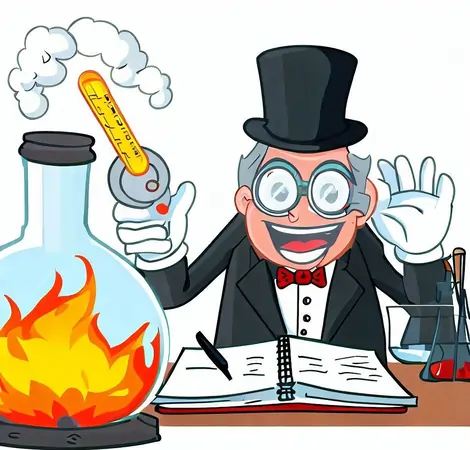Unlocking Success: The Importance of Creating a Plan for Your Thermodynamics Assignment

Before you begin writing your thermodynamics assignment, you should make a plan because it will have a big impact on the quality and success of your work. You can lay the groundwork for a cogent and well-organized assignment by taking the time to create a well-structured plan. It enables you to organize your thoughts, specify the main goals of your assignment, and sketch out the progression of your ideas. A thorough plan will help you comprehend the assignment's precise requirements, ensuring that you address all required elements and satisfy your instructor's expectations. Additionally, it gives you a plan for how to conduct your research, enabling you to efficiently gather accurate and pertinent data. With a plan in place, you can efficiently allocate your time and resources, deconstruct the assignment into doable tasks, and establish reasonable deadlines. This degree of planning avoids last-minute scrambles and makes it possible for you to conduct in-depth research, critical analysis, and thoughtful reflection. Making a plan ultimately gives you the confidence to approach your thermodynamics assignment with assurance, resulting in work that is cogent, persuasive, and shows a thorough understanding of the material.

Step 1: Understand the Assignment Requirements
Understanding the assignment requirements in their entirety is the first and most important step in developing a successful plan for your thermodynamics assignment. To do this, you must first analyze the assignment promptly to determine its key components, such as the specific subjects or issues you must address, the required format, the allotted word count, and the due date. You can plan your strategy for the assignment by thoroughly understanding the assignment prompt. By dividing your assignment into manageable sections or subsections, it assists you in determining the purpose and goals of your project. The grading criteria must be understood at this stage for you to prioritize your work and devote the necessary time and resources to each component of your assignment. Understanding the assignment requirements paves the way for a well-organized and targeted plan, ensuring that you meet your instructor's expectations and deliver a top-notch thermodynamics assignment.
Analyzing the Assignment Prompt
To make a plan for your thermodynamics assignment, you must first fully comprehend the specifications. Start by reading the assignment prompt thoroughly and highlighting the important details. Pay close attention to any formatting requirements, word counts, and submission deadlines as well as any specific topics or questions you need to address. You can determine what is required of your assignment and plan your approach as a result of understanding the prompt.
Identifying the Scope and Objectives
The scope and goals of your thermodynamics assignment must be determined after you have examined the prompt. Think about the key ideas, theories, or issues that must be resolved. The assignment should be broken down into smaller parts, such as sections or subsections, and each part's overall goal should be determined. This step assists you in creating a clear direction for your assignment, which makes it simpler to conduct targeted research and effectively present your arguments.
Establishing the Grading Criteria
For a thermodynamics assignment to be successful, it is essential to comprehend the grading criteria. To learn more about the evaluation process, consult the rubric or guidelines that your instructor has provided. Take note of the weights given to the various sections, the standards used to judge your work, and the expected level of detail. You can use this information to organize your efforts into priority areas and give each assignment component the time and resources it needs.
Step 2: Research and Gather Relevant Material
The next crucial step in developing a strategy for your thermodynamics assignment is conducting in-depth research and gathering pertinent materials. This comes after understanding the assignment requirements. This step entails investigating the key ideas associated with the assignment's subject and delving into the fundamental theories and principles of thermodynamics. To gain a thorough understanding of the subject, it is crucial to consult a variety of sources, including textbooks, lecture notes, and reliable online resources. Additionally, it's crucial to look for trustworthy sources to guarantee the veracity and accuracy of the data you use for your assignment. Consider using trustworthy websites that specialize in thermodynamics, academic journals, books, research papers, and other reliable sources. As you conduct your research, make thorough notes and arrange the data you have gathered for easy access when writing. You prepare the groundwork for a knowledgeable and supported thermodynamics assignment by conducting extensive research and gathering pertinent information.
Exploring the Thermodynamics Concepts
Since thermodynamics is a broad subject, in-depth research is necessary to compile pertinent data for your assignment. Investigate the fundamental ideas associated with the subject of your assignment first. To become familiar with the foundational concepts and theories, refer to your textbooks, lecture notes, and reliable online sources. This information will give you a solid foundation on which to build your arguments and analysis.
Searching for Reliable Sources
Use reputable and trustworthy sources when conducting research for your thermodynamics assignment. Look for reliable websites, scholarly books, research papers, and articles on thermodynamics. Online databases, including those for scholarly journals or digital libraries, can be useful tools. Do not forget to assess the sources critically to make sure they are credible, reliable, and relevant. Make notes and arrange the information you've gathered so it's simple to find them during the writing process.
Step 3: Organize Your Thoughts and Create an Outline
The next crucial step in making a plan for your thermodynamics assignment is organizing your ideas and creating an outline after you have gathered the required research materials. This step entails logically and cogently organizing your thoughts. Create a list of your assignment's main ideas, arguments, and supporting details to use as a starting point. To ensure a seamless and coherent flow of information, think about the order in which you will present this information. Establishing a clear structure for your assignment involves segmenting it into sections or subsections based on the subjects or ideas you must cover. You can do this to produce a thorough outline that will act as a guide for your writing. Using the outline will help you stay on task, spot any informational gaps, and make sure all the important details are covered. You prepare yourself for a coherent and well-organized thermodynamics assignment by structuring your ideas and composing a thorough outline.
Creating a Logical Structure
Establishing a logical structure in your thermodynamics assignment is critical to maintaining coherence and clarity. Prepare your main points, arguments, and supporting details by organizing and brainstorming them first. To ensure a seamless flow of ideas, take into account the order in which the information should be presented. Based on the subjects or ideas you must cover, divide your assignment into sections and, if necessary, subsections. Your assignment's foundation will be built upon this initial organization.
Developing a Detailed Outline
The time has come to create a thorough outline for your thermodynamics assignment now that you have a clear structure in mind. Divide each section into its individual subtopics or main talking points. Put these ideas in a logical sequence that advances your main point. Using the outline as a road map will help you stay on task and coherent as you write. Additionally, it aids in time management and guarantees that you don't overlook any crucial components of your assignment.
Setting Realistic Deadlines
Setting realistic deadlines for each stage of the writing process is crucial when creating your plan. Take into account the assignment's difficulty, the amount of research needed, and any other obligations you might have. You can stay organized and motivated by segmenting the task into smaller, more manageable chunks with deadlines. To improve the quality of your work, don't forget to allow extra time for revisions and proofreading.
Step 4: Writing and Refining Your Thermodynamics Assignment
The writing of your thermodynamics assignment comes after you have finished the planning and outlining stage. This step entails writing down your ideas and research to create a piece of writing that is organized and coherent. Start by concentrating on the introduction, where you give a succinct summary of the subject and goals of the assignment. Draw the reader in by outlining the main contention or goal of your assignment in a concise thesis statement. As you proceed to the body paragraphs, make sure that each one addresses a particular point or subtopic about thermodynamics and offers evidence to support it. To effectively communicate your ideas, use language that is clear and concise. To ensure a seamless reading experience, pay close attention to the logical flow and transitions between paragraphs. Spend some time revising your assignment after you've finished the first draught to make it look its best. Check your writing for coherence, clarity, and a logical flow of ideas. Make sure to fill in any gaps or weak spots in your argument, and if necessary, support your analysis with more research. Check your assignment for spelling, grammar, and punctuation mistakes, and make sure your writing follows the formatting requirements. You can write a well-crafted and excellent thermodynamics assignment by setting aside time for the writing and editing processes.
Drafting Your Assignment
It's time to start writing your thermodynamics assignment after you've organized your ideas and made an outline. Create a compelling introduction that sets the scene for your arguments by providing context. Based on the outline, create each section of your assignment, making sure there is a logical progression of ideas and a seamless transition between paragraphs. Provide evidence, examples, and pertinent research findings to support your arguments. Aim for coherence, accuracy, and clarity in your language and writing as you create. Attempt to make difficult thermodynamics concepts understandable to your readers. Spend some time reviewing and improving your assignment after you've finished the first draught. Make sure your writing is error-free, your arguments are supported by evidence, and your ideas are well-developed. You can improve your thermodynamics assignment's overall quality and effectiveness by paying close attention to the writing and editing processes.
Revising and Editing Your Assignment
It's critical to allot enough time for revising and editing your thermodynamics assignment after you've written the initial draught. This step allows you to polish your work, increase coherence and clarity, and ensure it complies with the assignment's requirements. Start by going over the assignment's content and looking for any areas that need more explanation or where your arguments fall short. Be mindful of the overall organization and make sure that each section flows into the next. Eliminate superfluous jargon, strengthen your sentences, and make your assignment more readable overall as you polish your language. Make sure your assignment is error-free by editing for spelling, grammar, and punctuation mistakes. To get new perspectives and recommendations for improvement, think about asking a peer or mentor for feedback. You can improve the quality of your thermodynamics assignment and deliver a polished final product by devoting time to the revision and editing process.
Conclusion
You must first create a well-organized plan to write a successful thermodynamics assignment. You can make sure that your assignment is well-focused, thoroughly researched, and effectively presented by following the instructions provided in this blog. You can create a top-notch assignment that demonstrates your comprehension of thermodynamics concepts by being aware of the assignment requirements, conducting in-depth research, organizing your ideas, and setting reasonable deadlines. Take the time to prepare your strategy, and you'll discover that writing is both more effective and enjoyable.